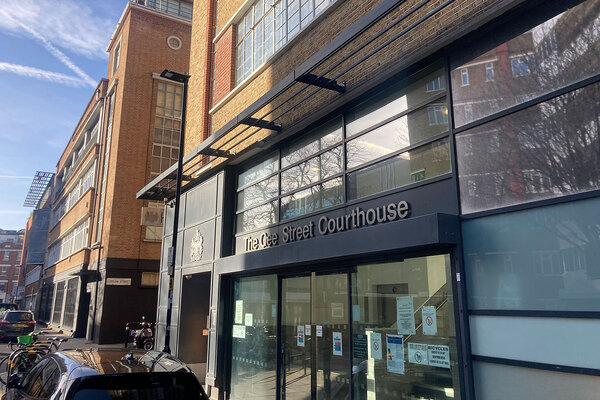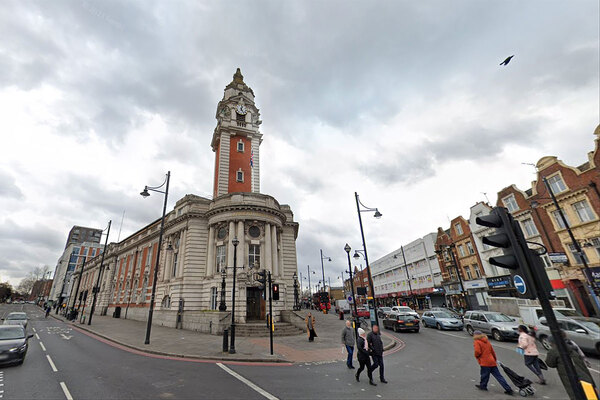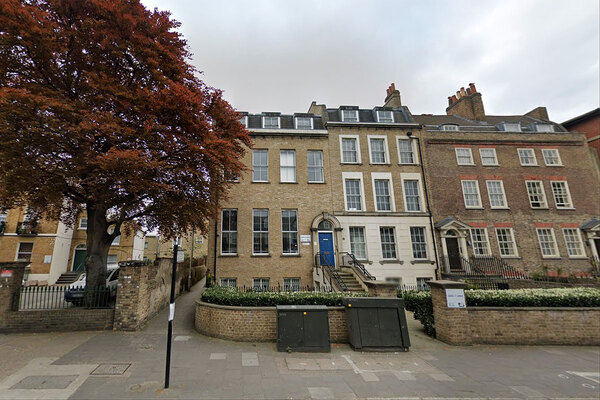You are viewing 1 of your 1 free articles
A likely story
Last year a fire broke out in a Shepherd’s Bush tower block and spread terrifyingly quickly up the outside of the building. Pete Apps investigates what went wrong - and what other social landlords need to learn from the experience
Despite being 18 storeys tall, it would be easy to walk straight past Shepherd’s Court. A bland and slightly decrepit looking post-war tower block, it sits in the middle of one of London’s busiest junctions – the entrance squeezed between a Subway’s and a kebab shop, while the building itself rises out of the middle of a shopping mall and a Vue Cinema.
But on 19 August last year, everyone noticed it. In the middle of the afternoon, flames began pouring from the open window of a kitchen on the seventh floor, and quickly spread up the side of the building.
Dorothy Davies was just leaving Westfield shopping mall on that hot late summer afternoon when she saw the smoke rising from the block of flats she has called home for the last 30 years.
Immediately she phoned her husband, an 82-year-old with chronic obstructive pulmonary disease and told him to get out. He’d seen the smoke from out of the window of their tenth floor flat but had thought it was just a foggy day.
Mr Davies left the flat, but thick black smoke was already filling the stairs and he thought he would be trapped.
“We were terrified for him,” his wife told Inside Housing, nearly eight months later as she walked her dog on a drizzly day on Shepherd’s Bush high street. “Especially in his condition.”
Faced by the smoke, and panicking, he decided to use the lifts to escape. In a fire, especially one as fierce as the blaze which gripped Shepherd’s Court that day, this was a serious risk. Thankfully, he made it safely out of the building. He was just one of more than a hundred who had to make similar escapes.
The source of the fire was quickly pinned to a faulty Indesit tumble dryer, which has rightly been the subject of political scrutiny about product safety.
But for the housing sector there were other pressing questions about how the flames were able to rip through the building so easily. According to the London Fire Brigade (LFB), residential flats are supposed to prevent the spread of flames beyond their confines for an absolute minimum of 30 minutes. As a result, the official advice from the fire service to residents is that it is usually safer to stay put when a fire starts elsewhere in the building.
Seven miles across London, Lakanal House stands as a grim reminder of what it means when this protocol goes wrong. In 2009, a faulty TV caught fire on the ninth floor. The flames spread up and down the building, trapping people in their flats. Six residents, including three children, lost their lives in harrowing, terrifying circumstances.
Local MP Andy Slaughter has told Parliament that a senior fire officer who attended both blazes said he expected to find multiple serious injuries and fatalities at Shepherd’s Court because of his experience at the Camberwell fire.
Given this background, understanding why the fire spread at Shepherd’s Court – and whether it would do so in other, similar buildings – could not be of greater importance to social landlords up and down the country.
The failings at Lakanal were myriad and well documented in the findings of a detailed coroner’s inquest into the deaths. Where the fires differ, crucially, is that the internal structure of the building at Shepherd’s Court successfully contained the flames and prevented them spreading through the inside of the building. The fire service confirmed this shortly after the blaze.
But Inside Housing has been seeking answers as to how the fire spread across the outside of the building from London Fire Brigade (LFB) and Hammersmith and Fulham Council since the week of the blaze.
Finally, in response to a Freedom of Information request, LFB released research dated 30 November (which year?), commissioned from a consultancy called Bureau Veritas, into the white external insulation panels which are attached below the windows on Shepherd’s Court.
The panels are made of a 1mm stainless steel sheet mounted on top of 17-23mm of blue foam plastic and a plywood board, the edges enclosed by plastic foil. When exposed to flame, nothing happened to the steel at first. But if exposure continued, the blue foam underneath began to melt, with serious consequences (see box).
BOX - THE INVESTIGATION
The LFB report on the panels found:
· The panels comprised a 17-23mm plywood board, covered by blue polystyrene foam, 1mm steel sheet and decorative white paint
· When exposed to high flames, the polystyrene foam melted away, causing the metal sheet to fall and exposing the foam and wood to the flames
· This is “likely” to have occurred to the panels above the flat where the fire started, with flaming droplets falling and flames spreading up
· The experts concluded this is “likely to have assisted the fire in spreading up the outside of the building, as this mechanism progressively exposes a plywood surface to a developing fire”
“This would occur in a progressive fashion as the fire develops and would ultimately lead to the steel sheet not being held in place by the blue foam,” the experts said.
“The weight of the steel sheet would then ensure that it would become detached from the remainder of the panel and expose the heat damaged blue foam and plywood layers to the developing flame front.”
It concluded that this is “likely to have assisted the fire spreading up the outside of the building”.
Further testing by Bureau Veritas revealed the blue foam material in the panels was polystyrene. This should be a cause for concern. According to a report into fire safety written by insurer Royal and Sun Alliance: “Polystyrene is a thermoplastic material, which melts and ignites relatively easily, and can rapidly burn in between the metal facing sheets of a composite panel. This allows extensive and violent fire spread, and makes fire fighting almost impossible.”
It adds that buildings with “polystyrene panels within the external wall claddings and will be very vulnerable” to fires.
“The presence of polystyrene panels is regarded as being a ‘significant finding’ for the purposes of statutory Fire Risk Assessments, due to the potential for extremely rapid fire spread and the release of large volumes of toxic smoke,” it adds.
However, it appears Hammersmith and Fulham was not aware of this risk. In correspondence also released under FOI, it responded to the LFB’s initial concerns about the panels as follows:
“We are surprised to be informed of any fire risk associated with the facade panels as we had no knowledge of this prior to your letter.”
Since then, the council has taken action. It has commissioned Colin Todd Associates, an independent consultancy which specialises solely in fire risk assessments, to investigate further. [can we say any more about the scope of this investigation?]
The panels used at Shepherd’s Court were installed during window replacement work over 10 years ago. The original contractor was Connaught, which went bust in 2010. The job was finished by Balfour Beatty which is understood to have had no involvement in installing the panels.
Inside Housing requested further information from the council - including when the panels fire protection rating and whether they are installed on any other buildings in the borough and a fire risk assessment for the building. ??
However, it refused the request saying the information is material to an ongoing “criminal” investigation being carried out by the London Fire Brigade. But when approached specifically on this point, the council’s head of communications confirmed there is no criminal investigation ongoing. Inside Housing has therefore appealed the decision to withhold the information on the basis of a non-existent criminal inquiry.
The panels still appear to be fixed to building Shepherd’s Court – at least with the exception of six floors on one side where fire damage is still visible and tarpaulin sheets are draped across the building. Identical panels appear to be in use on three neighbouring towers: Bush, Woodford, and Roseford Court. The LFB warned in a letter to H&F in October that it “believes the panels have been used in neighbouring buildings”. It has also written in warning to all local authorities in London.
Plainly this is an issue of major concern to the sector and anyone who manages tower blocks. Arnold Tarling, a chartered surveyor at Hindwoods and a fire safety expert, says: “I’m worried about cladding systems in general. For a long time, people have been attaching things to the outside of buildings for insulation.
“It can be a catastrophic problem, particularly when flames can get in through windows and a ‘stay put’ policy is in place.”
What is clear is that Hammersmith and Fulham was not aware of the potential risk posed by the panels attached to the outside of one of its building. Other social landlords could be in the same position.
It must be hoped that they will discover any issues and deal with them before another tragedy occurs.







